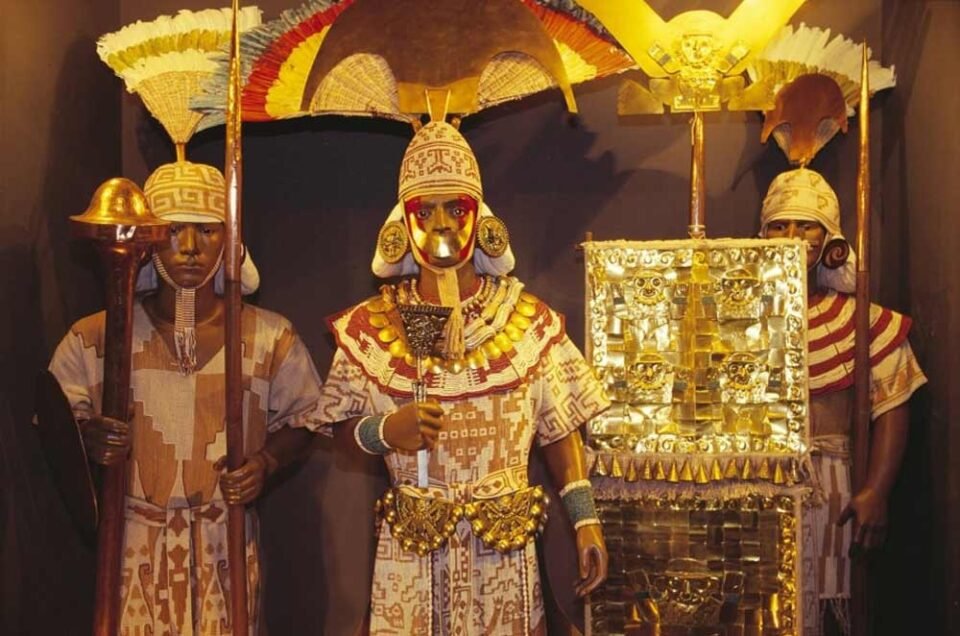Peruvian goldsmithing during the pre-Columbian era was a highly developed art form. The Inca civilization, in particular, was known for its skilled goldsmiths who created intricate pieces of jewelry, ornaments, and ceremonial objects.
One of the most famous examples of Inca goldsmithing is the Mask of the Lord of Sipán. This gold mask was discovered in 1987 in the tomb of an ancient ruler of the Moche civilization, which predates the Inca. The mask is made of gold, silver, and copper, and is adorned with precious stones and intricate designs.
Other examples of pre-Columbian Peruvian goldsmithing include the Tumi knife, which was used for sacrificial purposes and is now a symbol of Peru, and the Kero cup, which was used for drinking ceremonial beverages.
The art of Peruvian goldsmithing was not limited to the Inca civilization, however. The Moche, Nazca, and Chimu cultures also produced stunning pieces of gold and silverwork. Many of these artifacts can be seen today in museums throughout Peru and around the world.
Peruvian goldsmithing techniques have a rich history that dates back to pre-Columbian times. Nowadays, Peruvian goldsmiths still use many traditional techniques alongside modern innovations to create stunning pieces of jewelry and other decorative items.
One of the most notable traditional techniques is the use of filigree, which involves shaping thin gold or silver wires into intricate patterns and then soldering them onto a metal base. This technique has been used in Peru since ancient times and is still widely used today.
Another traditional technique is the use of repoussé, which involves hammering and shaping metal from the reverse side to create intricate designs and relief patterns. This technique was used extensively in the creation of pre-Columbian gold artifacts, and it is still used in contemporary Peruvian goldsmithing.
In addition to these traditional techniques, Peruvian goldsmiths also use modern techniques such as laser cutting, which allows them to create precise cuts and intricate designs in metal. They also use computer-aided design (CAD) software to create 3D models of their designs before bringing them to life in metal.
Overall, Peruvian goldsmithing during the pre-Columbian era was an important part of the region’s artistic and cultural heritage, and continues to be admired and studied by scholars and art enthusiasts alike. Due to the beautiful blend of traditional and modern techniques, resulting in stunning and unique pieces of jewelry and art.




